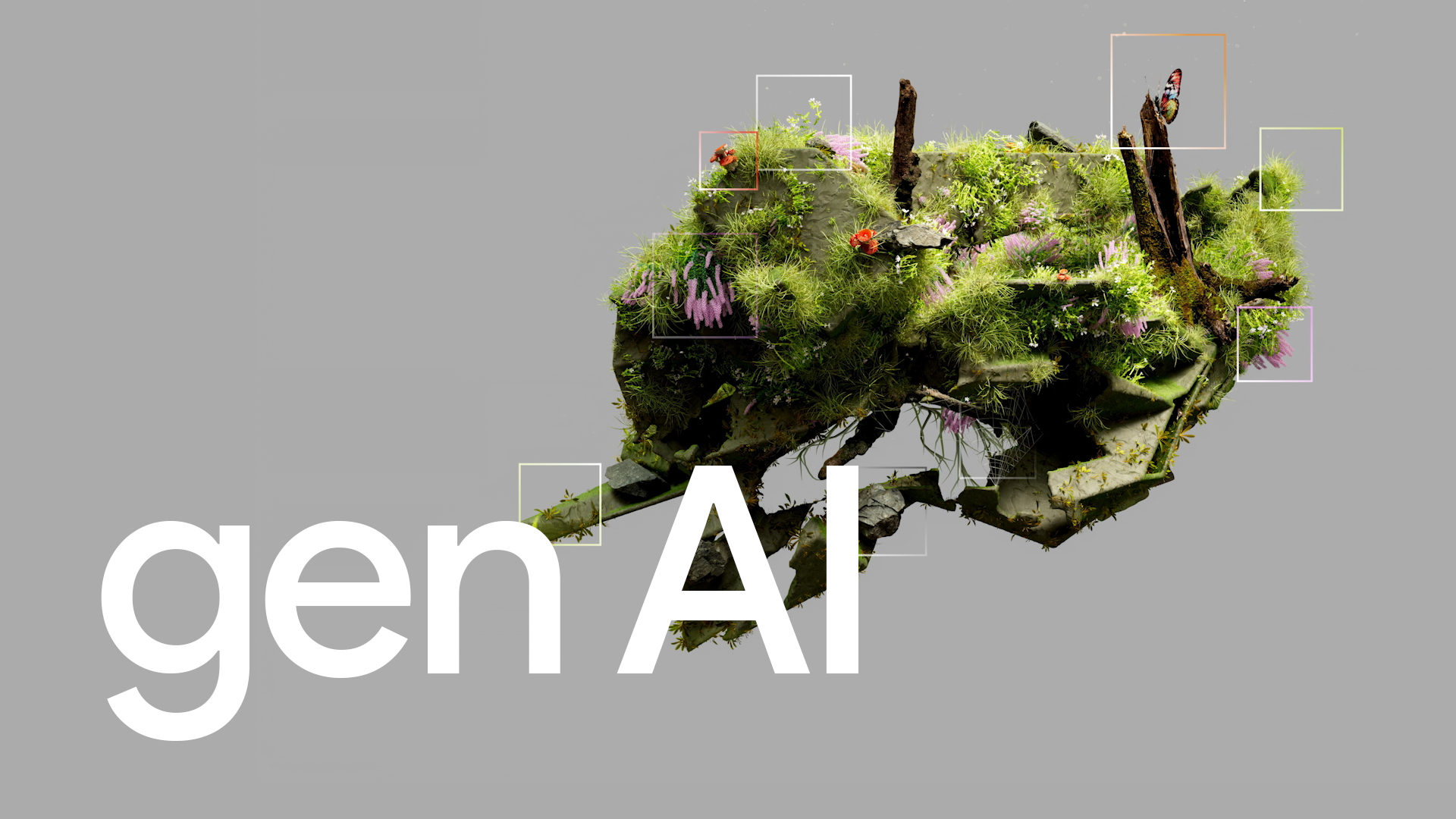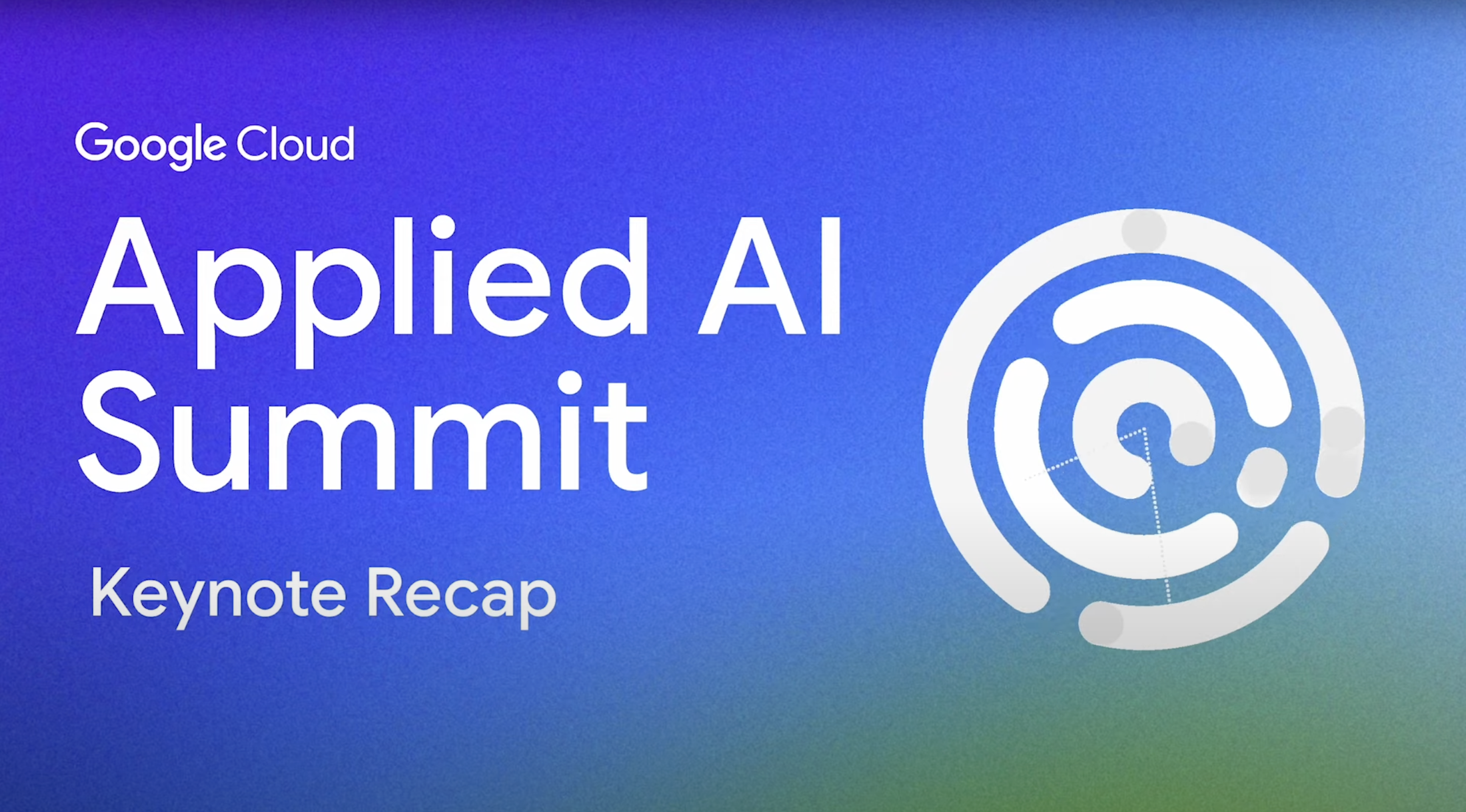The Prompt: The industries leading on gen AI aren't the ones you’d think

Caroline Yap
Managing Director, Global AI Business, Google Cloud
What do actuarial tables, cement trucks, and designer jeans have in common?
Business leaders are buzzing about generative AI. To help you keep up with this fast-moving, transformative topic, our biweekly “The Prompt” column brings you observations from the field, where Google Cloud leaders are working closely with customers and partners to define the future of AI. In this edition, Caroline shares insights about the industries at the forefront of the gen AI charge. The leaders may just surprise you.
The generative AI space is full of constant surprises. One of the biggest, yet least talked about, is who’s been leading the way on AI adoption — and how it’s not who you might expect.
Throughout the hundreds of hours I’ve spent talking with customers and partners around the world over the last year, what has grabbed my attention is the fact the industries and sub-sectors making the most progress are not traditionally fast movers when it comes to new technology.
It’s fascinating to see how typically late-adopting industries are gaining the most forward momentum. At the same time, it makes sense when you reflect on what sets gen AI apart from previous technologies and its newfound capabilities that have unlocked historic levels of accessibility, creativity, productivity, and efficiency.
In a way, these industries are moving so rapidly because, for the first time ever, they can.
Businesses can start building with gen AI and get immediate value from it faster than pretty much any other technology we’ve seen before. Instead of needing specialized programming or data science skills, it’s possible to extract information, execute tasks, and even fine-tune gen AI models simply by asking a question or writing instructions with natural language prompts. The approachability and accessibility of gen AI give it the lowest barrier to entry in the history of computing. It carries universal appeal, providing opportunities to increase productivity, improve experiences, and drive product innovation across every industry.
These are just some of the benefits that have unlocked this technology for a handful of unexpected secotrs. Among the ones we’ve seen taking greatest advantage of gen AI are insurance, construction, and luxury goods.
Another important factor driving these industries’ adoption is that generative AI is quickly evolving to include multimodal models that connect to external and proprietary sources. Typically, some of the slowest industries to adopt new technologies are trying to use technology to solve unstructured problems — challenges that involve retrieving, blending, and analyzing many different types of data.

Sophisticated multimodal models unlock the ability to bring gen AI capabilities beyond training data and apply them to all enterprise data, whether that’s text, code, audio, images, or video. With gen AI, organizations can get detailed answers and insights across many types of information without having to navigate how to integrate, adapt, and automate existing technology and data systems.
Let’s take a look at how these industries are making the most of gen AI, and how others might follow their lead this time, instead of the other way around.
Insurance
In the insurance space, there’s very little structured data — nearly everything starts and ends with a document. The industry relies heavily on manual information collection, digging through an endless stream of digital and physical documents: forms, emails, customer support messages, social media posts, transaction reports, and more.
Some of the most effective gen AI use cases we’ve seen target streamlining operations and increasing worker productivity. Gen AI models are adept at synthesizing massive amounts of data — especially unstructured data — allowing organizations to gain insights and detect patterns in customer data from across various functions of their business.
Underwriting, for example, is an unstructured process by its very nature. Each risk is unique, so insurance providers spend a lot of time collecting information, often with manual data entry and document classification, to create risk profiles and generate quotes. With a gen AI assistant, underwriters can save time by using prompts to get answers and provide a smoother customer experience: How big is your yacht? Where is it docked? Are you in an area prone to hurricanes? Do you store valuable items like art on it?
Recently, Hiscox, a leading British specialty insurer, became the first underwriter in the London Market at Lloyd’s to establish an AI-enhanced underwriting model. In an initial proof-of-concept, quotes could be generated within three minutes — and this was for the highly complex “sabotage and terrorism” insurance line. In fact, Hiscox chose this line of business as its pilot because it is so complex and involves so much manual entry. Having succeeded here, the company is looking to expand into other lines.
Using gen AI, insurance companies can speed up, and potentially fully automate, routine tasks, reducing the time spent on administrative work. In addition, the ability to detect patterns or anomalies in data can help generate new insights, which can in turn drive more personalized offerings, improve risk assessments, and prevent fraud.
Whether it’s other financial sectors, or white collar industries writ large, including design, legal, medical, and marketing fields, documentation is a common challenge for organizations to overcome, and the insurance industry is showing just how much opportunity exists.
Construction
Gen AI delivers immense value to businesses that are faced with trying to make complex decisions using many different forms of information. Imagine how difficult it is to predict how many cement trucks should be present at a construction site on a specific day. A company has to consider a variety of factors: parking regulations, project timelines, construction processes and documentation, material availability from cement suppliers, safety protocols, and much more.
Many of the construction organizations I have met with are exploring how to use gen AI models to help them predict, plan, and coordinate the delivery of materials and equipment for their projects. Construction logistics are a critical piece of ensuring the successful completion of construction projects, ensuring materials and resources are available to keep everything running smoothly and safely on schedule and within budget.
For example, Google Cloud leaders joined HD Hyundai at CES last month to talk about how the South-Korean heavy equipment manufacturer is integrating solutions like Vertex AI into their construction site management platform, X-Wise Xite. As models are trained on construction data, they will be better able to make new connections and support humans to direct projects more efficiently.
Gen AI delivers immense value to businesses that are faced with trying to make complex decisions using many different forms of information.
On the development side, we helped Lend Lease launch Podium for Development last December, a data hub meant to connect developers, designers, contractors, and their supply chains in order to speed up and enhance residential and commercial development.
Another opportunity we’ve discussed with some industry leaders is enhancing safety and security at work sites. With multimodal gen AI capabilities, construction organizations could combine visual input from on-site video feeds or images with insights from document-based processes, such as incident reports, financial reporting, and project timelines to help complete projects more safely and efficiently.
These are all the kind of safety and efficiency programs that many industries, such as manufacturing, supply chains, and public sector, could be exploring in similar ways that still meet their specific industry needs.
Luxury brands
As a general rule, personalization lives at the heart of most retail experiences — and for luxury brands, the personal touch can make or break the delicate customer relationship.
Luxury brands depend on the ability to hyper-personalize their products and services for an elite and demanding set of consumers. They can be fiercely loyal but also fickle since they have the means to shop pretty much anywhere. When it comes to creating bespoke, high-quality products, luxury brands rely on understanding and catering to the subtle differences in the taste of each individual’s style — an experience that rarely translates well in the digital world.
Many luxury retail brands have had to sit on the sidelines as the rest of their industry has revolutionized and grown with e-commerce. Until now, technologies have rarely been able to capture the exclusivity and personalization that creates the essence of these luxe brands.

Now, we’re seeing these retailers and hospitality providers working to embrace generative AI and create a digital presence that mirrors the same exclusive experience a shopper would encounter in their physical environments. For example, brands can build out gen AI-powered personal shoppers and concierges, able to not only pull together personal recommendations or guide a high-end purchase but also encapsulate a brand’s distinct voice and values — and that’s just the beginning.
The luxury sector stands to benefit from a variety of potential use cases, spanning marketing content and campaign creation; product development and design; store layout optimization; and more resilient supply chains.
A future where everyone will be digital leaders
In the coming years, we expect to see gen AI accelerate digital expansion in more and more industries that have historically tread lightly. Already, we’re witnessing a flurry of activity and significant interest from sectors with a reputation for technology stagnation to understand how to implement and regulate gen AI.
Banks and other financial institutions are currently testing gen AI-powered agents to make customer experiences more personal, easy, relevant and instant. Healthcare and life sciences companies are creating gen AI solutions to extract information from physician-patient conversations to create digital medical notes.
Government entities and departments are exploring how to use generative capabilities to help them boost the delivery of public services like unemployment benefits. In one country we visited, the government is even piloting the use of a gen AI chatbot to help them summarize policies and better analyze the reasoning behind legislative processes.
Gen AI is a game changer that will not only open up never-before-seen avenues to creativity and value, but empower every organization — even those who have lagged behind in the past — to win with cutting-edge technologies.
Opening image created with Midjourney, running on Google Cloud, using the prompt: an impressionistic tableux with construction equipment, luxury bags, actuarial tables, flowers, and other things common in a still life picture... make the construction equipment more obvious, like a yellow hard hat, a hammer, maybe a construction cone, and please add some actuarial tables and other insurance-type things, maybe a calculator or stacks of paper... make the background look like a sky, can you add some flowers, add one more luxury purse and some stacks of paper.



